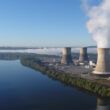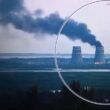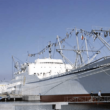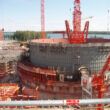Tracking Fukushima radionuclides: A research cruise in Japanese waters
By Nicholas S. Fisher, Ken O. Buesseler, July 19, 2011
The release of radionuclides from the Fukushima Daiichi nuclear reactors in Japan is the largest accidental release into ocean waters in history. While it is entirely possible that some of the consequences of this release may be problematic with respect to safe consumption of some seafood items, much of this concern stems from the public’s fears about the unknown in general and fear of radioactivity specifically. Public health issues are not the only concern; it is possible, although not likely, that there are also consequences for fish and other marine life in waters closest to the discharge point.
The Japanese have issued periodic reports recording measurements of the radioactive isotopes that are of greatest concern in a nuclear power accident: iodine 131, cesium 134, and cesium 137 — which have half-lives of 8 days, 2 years, and 30 years, respectively. These measurements have been taken in the power plant’s discharge canals (which normally convey heated water from the plant’s steam generators to the ocean), in the ocean near the damaged reactors, and offshore to a distance of 30 kilometers (about 19 miles).
Our knowledge of the concentrations of these isotopes at greater distances from shore, and at different depths, is extremely limited at present. Moreover, there is very little that has been reported regarding the concentrations of these radioactive isotopes in marine sediments or in resident marine organisms.
There have been only scant reports of other radionuclides that were released from Fukushima since the earthquake on March 11. It is possible that other radionuclides such as strontium 90, ruthenium 106, cerium 144, and possibly transuranic radionuclides such as plutonium 239, may have also been released into coastal waters. It is noteworthy, but not surprising, that none of the reports on radionuclide concentrations in marine ecosystems near Fukushima have yet been published in the peer-reviewed scientific literature.
Each of the released radionuclides has its own characteristic reactivity for sediments and for bioaccumulation in marine organisms. The more easily a radionuclide is assimilated into marine animals, the more likely it is to accumulate in the marine food chain and potentially be eaten by humans. Animals can also package unassimilated radionuclides in fecal material that sinks rapidly and transports the radionuclides to deeper waters, thereby shortening their residence times in the water column.
Without direct measurements of radionuclides in the ocean waters east of Japan, it is impossible to assess which isotopes are most abundant and which may pose risks to marine life or human consumers. Based on studies of previous releases into other coastal waters — for example, intentional discharges from the Sellafield nuclear reprocessing plant in the United Kingdom, and accidental releases associated with the Chernobyl disaster — it is likely that naturally occurring radionuclides, such as potassium 40 and carbon 14, will dominate the radioactivity in marine organisms. For example, fish muscle tissue normally contains potassium 40 levels of about 93 millibecquerels per gram (wet weight), carbon 14 of about 15 millibecquerels per gram, polonium 210 up to 5.2 millibecquerels per gram, and about 1 millibecquerels per gram each of uranium 238 and rubidium 87. By comparison, fish exposed to Sellafield effluent in the Irish Sea display cesium 137 concentrations of less than 2 millibecquerels per gram. Among the anthropogenic radionuclides of interest, cesium concentrates principally in muscle, while strontium and transuranic elements (such as plutonium and americium) concentrate in bone.
It is anticipated that for most locations the doses to humans from naturally occurring radionuclides, even for avid seafood consumers, will exceed those from the radionuclides released by the Fukushima accident. Near Sellafield, for example, doses to humans from naturally occurring radionuclides in seafood caught in the Irish Sea are about an order of magnitude higher than doses from artificial radionuclides. Total collective dose rates from natural radionuclides via marine pathways on a global basis are four orders of magnitude higher than collective doses from Chernobyl radionuclides. Even in the Baltic and Black Seas, the marine waters most contaminated by Chernobyl fallout, natural radionuclides provide a much larger collective dose to seafood consumers than do Chernobyl radionuclides.
Once the concentration of specific radionuclides is determined in fish and other animals off the coast of Japan, it will be possible to compare the doses from anthropogenic and natural radionuclides there. If Fukushima radionuclides are concentrated in the sediment and groundwater near the site, these may remain a long-term source of radionuclides to bottom-dwelling organisms and coastal waters.
To address some of the unknowns regarding the dispersal and risks of radionuclides, we undertook a cruise in waters east of Japan from June 4 to 19, to assess the concentrations and spread of Fukushima-generated radionuclides in the northwestern Pacific. We collected a wide range of dissolved and particulate radionuclide samples in water, and in planktonic organisms and small fish. In addition, we took measurements of basic water properties and ocean currents that will be used to model dispersion rates and transport from the accident site to the Pacific Ocean. Background cesium 137 concentrations, primarily from prior weapons testing, will be used as a baseline against which new measurements of this isotope will be compared. We will use ratios of cesium 134 to cesium 137 to help quantify the radioactive cesium released from Fukushima, because the only source of cesium 134 in the Pacific today is the Fukushima release.
Many radionuclides sink to the ocean bottom faster than cesium does, because they bind more readily with settling particles. By measuring the ratio of plutonium to cesium in the surface ocean over distance and time, for example, we can study the geochemical residence time of plutonium. Given the short half-life of iodine 131, we anticipate that offshore waters and most marine organisms will have only traces of this isotope, unless there are new releases from Fukushima.
Last month’s cruise included international collaboration by many labs and scientists, measuring a variety of radionuclides. By this process we will obtain a more comprehensive understanding of radionuclide levels, and reach greater international agreement on these levels, so we can more fully assess the impacts to marine life and answer the many questions regarding the magnitude, transport, and fate of Fukushima radionuclides in the Pacific.
Topics: Nuclear Energy
Share: [addthis tool="addthis_inline_share_toolbox"]














